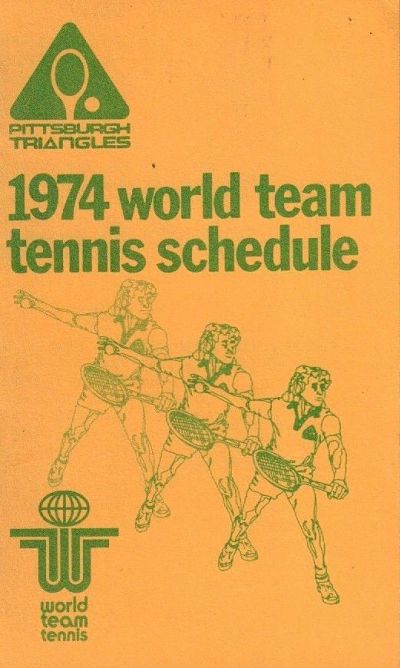Ken Rosewall was the odd man out when Australia triumphed in the 1973 Davis Cup final, but less than two weeks later, he was in the news as a sought-after star. On December 11th, the 39-year-old signed on as the player-coach of the Pittsburgh Triangles. He would team with Evonne Goolagong, Vitas Gerulaitis, and others when the World Team Tennis campaign began in May.
Rosewall’s signing was a much-needed shot in the arm for the upstart league. It had held a player draft in August, making a splash with the early signings of Billie Jean King and John Newcombe. Since then, contract announcements had been sparse, especially among men. The Association of Tennis Professionals, the men’s union, was skeptical of the concept; leading figures Stan Smith and Arthur Ashe were particularly firm against it. Until the ATP made an official decision, men who joined a Team Tennis squad risked suspension from the main tour.
That was just the start. The International Lawn Tennis Federation continued to deny their sanction to the league, seeing the May-to-August schedule of stateside dates as an existential threat to the traditional European summer calendar of the French Open, Italian Open, and so much more. WTT bigwigs had made it clear that it wouldn’t stand in the way of Wimbledon, but given the proposed league schedule, other conflicts were inevitable.
Enough player signings, though, and the governing bodies would be irrelevant. Limited as it was, the men’s roster already included Rosewall, Newcombe, and Jimmy Connors. By the end of the month, Ilie Năstase would also be flirting with the league. Drafted by San Diego, he made news when he demanded a trade to New York, saying it was the only place he would play–if he decided to play at all. WTT had no problem lining up top women: In addition to King and Goolagong, Margaret Court had reached an agreement with the San Francisco Golden Gaters, even if she had yet to put pen to paper.
If organized tennis had learned one thing since the beginning of the Open era in 1968, it was that money would win in the end. The details of Rosewall’s contract weren’t immediately announced, except that the modest Australian would receive most of his compensation in the form of “annuities, life insurance, and a pension.” Rumors swirled that top players could get six-figure deals–enormous sums for a few months of exhibition tennis. Only eight men earned $100,000 for the entire 1973 campaign, and Năstase played 32 weeks–not counting Davis Cup!–for his table-topping $228,750.
Much of the sport’s old guard hoped that Team Tennis would simply go away. Five months away from the first serve of the proposed 1974 season, Rosewall’s signing was a reminder that yet another battle for talent, status, and fan attention laid in wait.
* * *
This post is part of my series about the 1973 season, Battles, Boycotts, and Breakouts. Keep up with the project by checking the TennisAbstract.com front page, which shows an up-to-date Table of Contents after I post each installment.
You can also subscribe to the blog to receive each new post by email:
